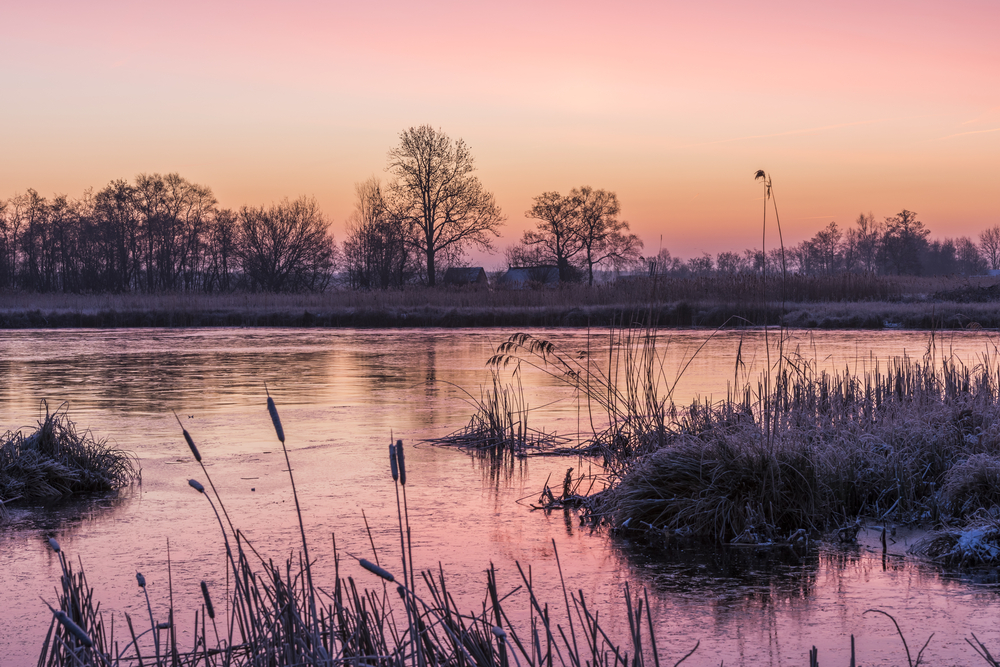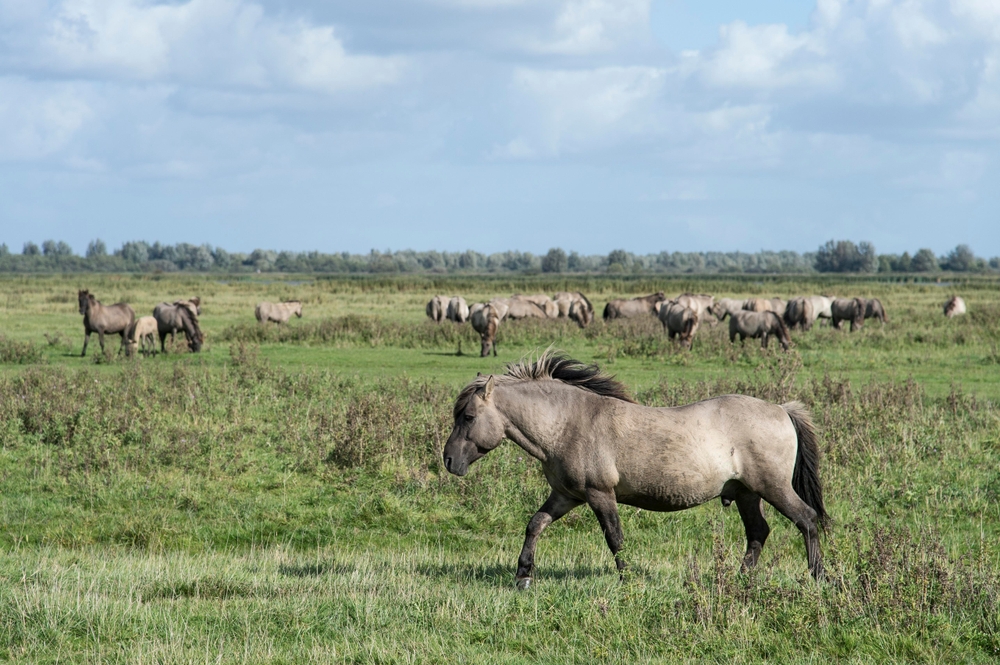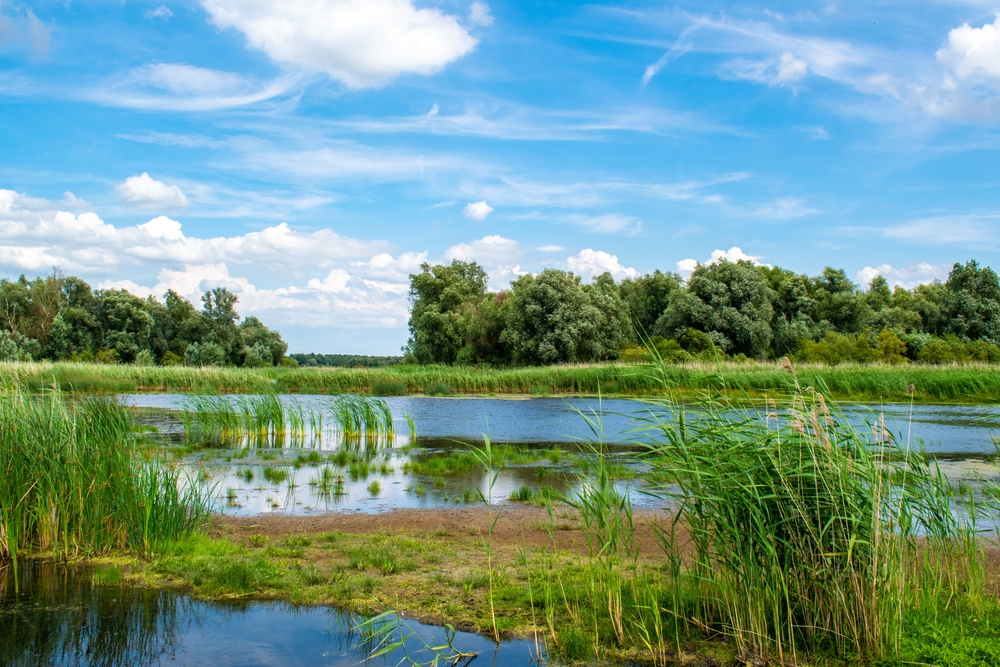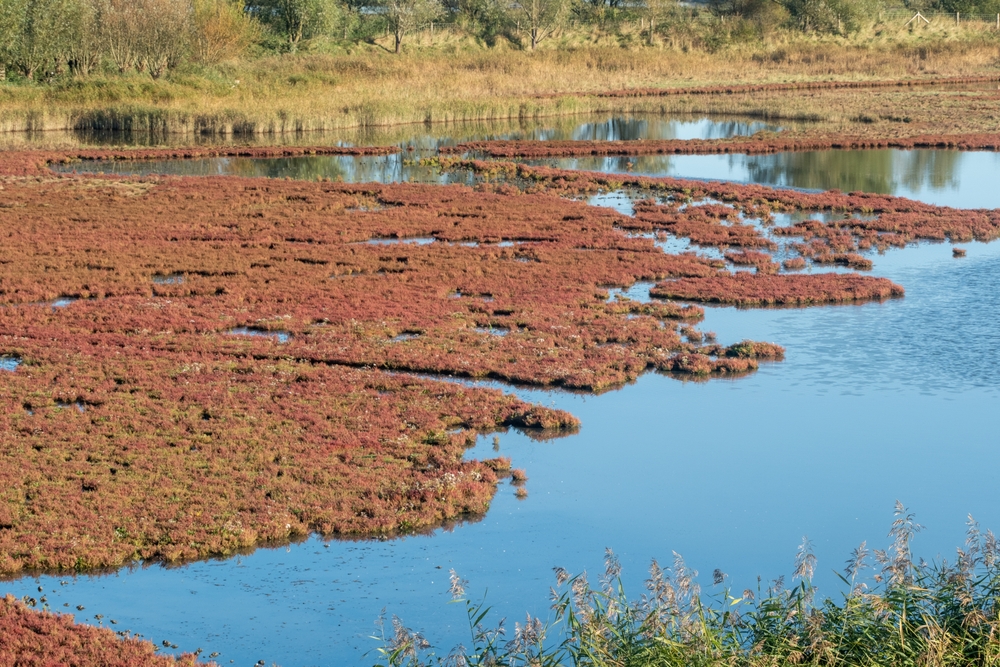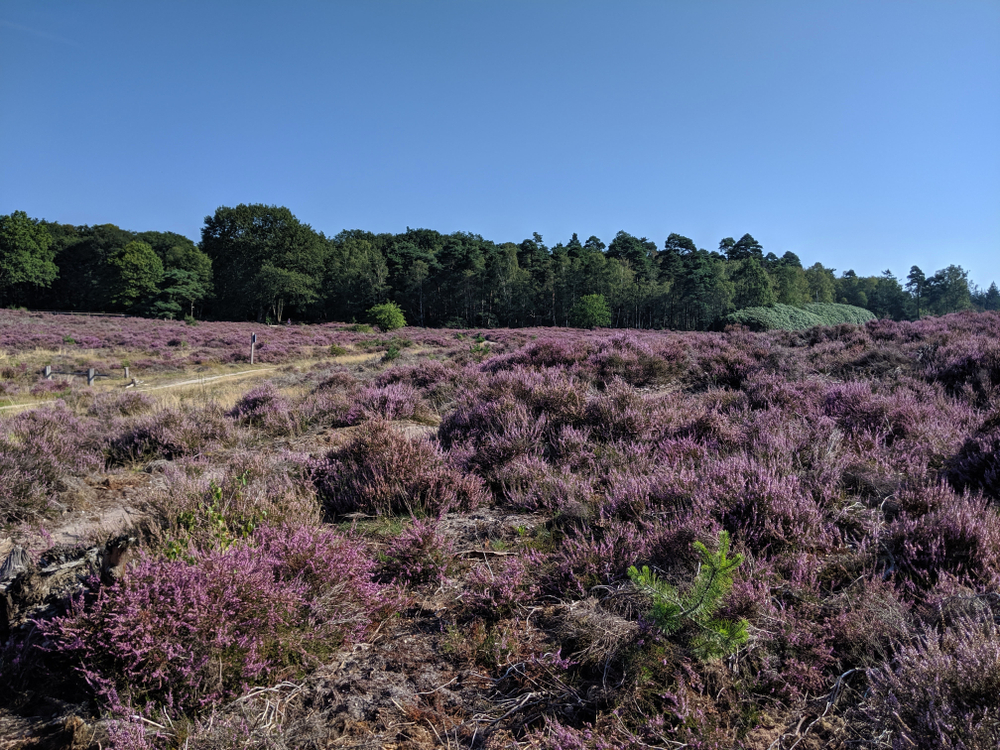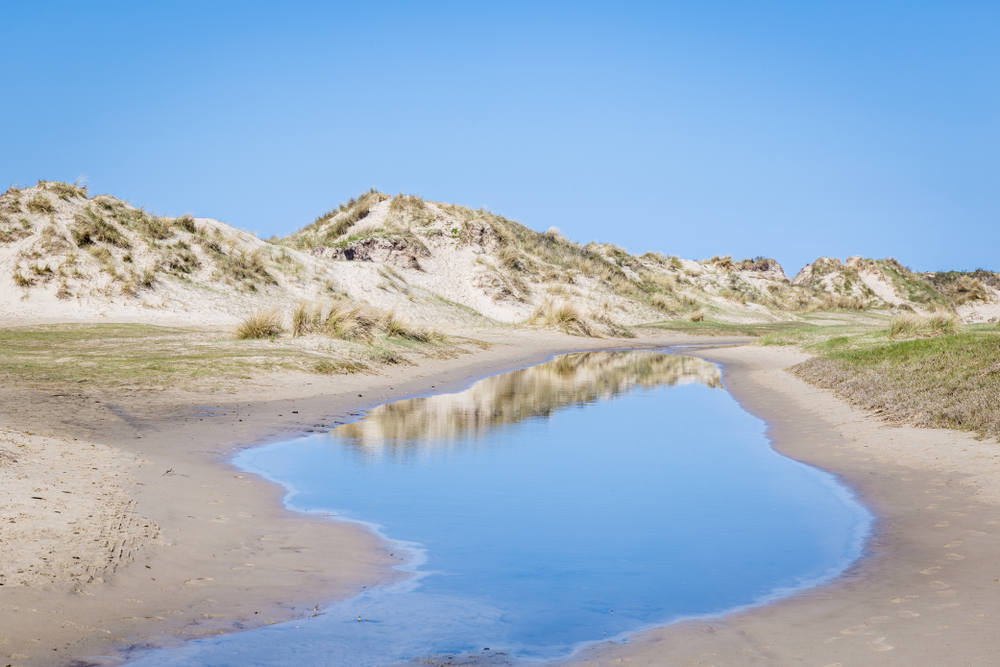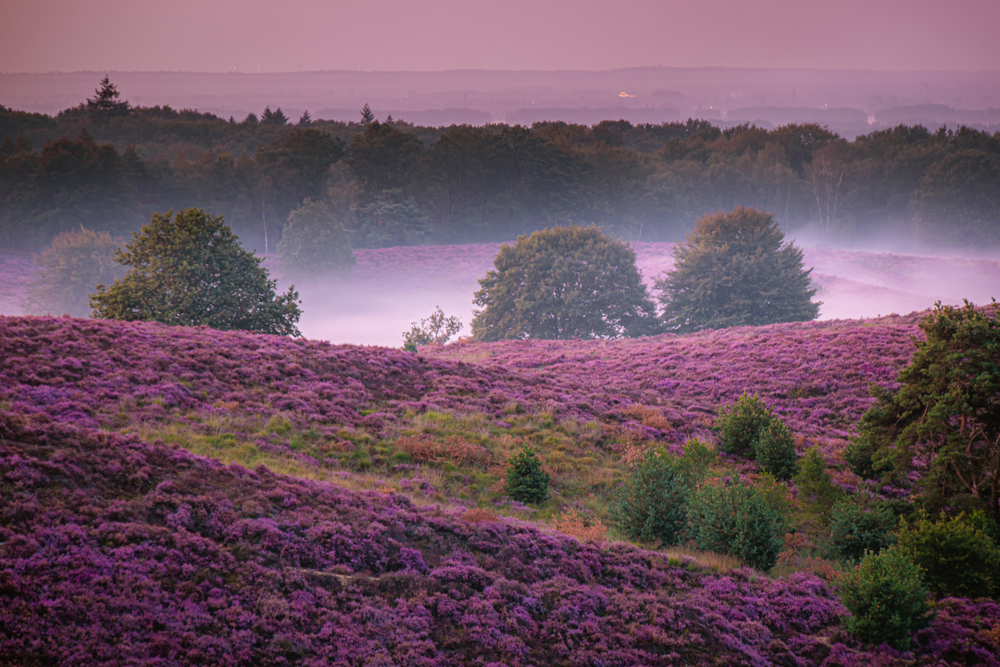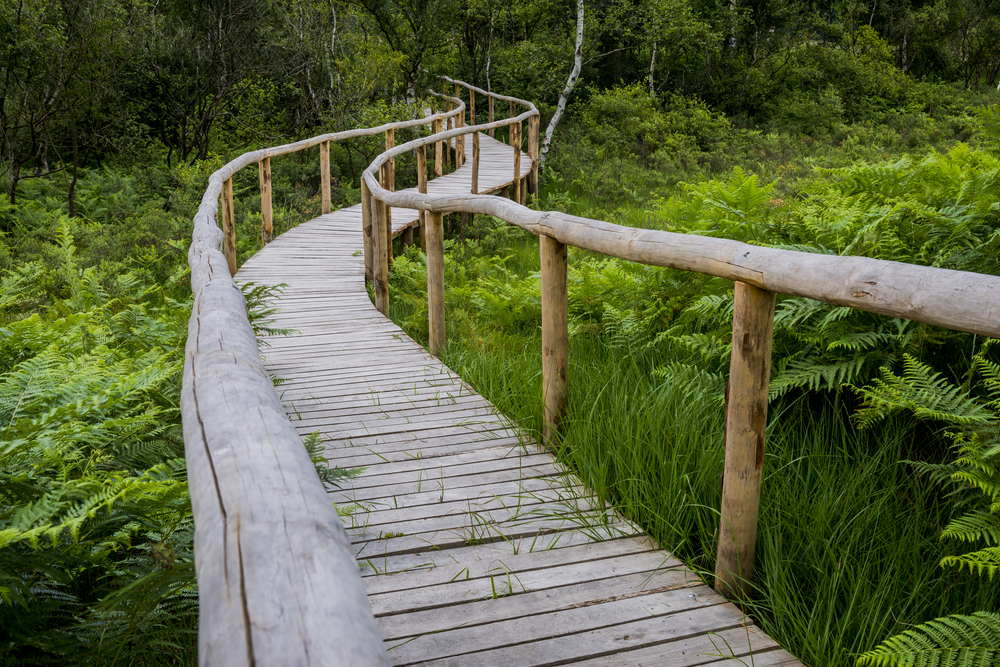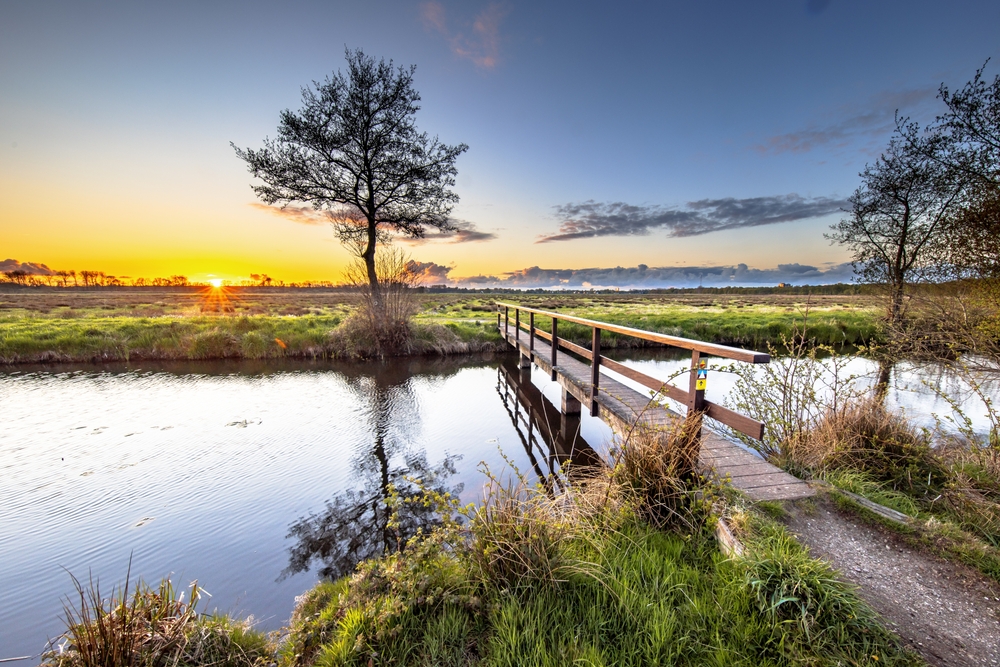Weerribben-Wieden Overview
Weerribben-Wieden National Park, known locally as Nationaal Park Weerribben-Wieden, is the largest freshwater wetland in the Netherlands.
Covering an area of approximately 40 square miles (104 square kilometers), it is located in the province of Overijssel, near the town of Giethoorn, often referred to as the “Venice of the North.”
This park is a remarkable example of a peat bog landscape shaped by centuries of human intervention, where traditional peat cutting and reed harvesting have helped create a mosaic of lakes, canals, reed beds, and swamp forests.
The park’s terrain is characterized by an intricate network of waterways, large lakes, and vast reed fields, interspersed with floating peat mats and wet meadows. The landscape is a result of peat extraction that took place from the Middle Ages until the early 20th century.
Over time, the flooded peat pits transformed into shallow lakes, while vegetation slowly reclaimed the land, forming an ecologically rich wetland. Key features include Beulakerwijde and Belterwijde, two of the park’s largest lakes, as well as the meandering Kalenbergergracht, a picturesque waterway lined with historic houses and traditional boathouses.
Weerribben-Wieden National Park is home to a diverse range of flora and fauna, making it one of the most ecologically significant areas in the Netherlands. The park supports a rich variety of aquatic and wetland plants, including yellow water lilies, bladderwort, and rare bog mosses. Extensive reed beds dominate the landscape, providing crucial habitats for numerous bird species.
The park is a haven for birdwatchers, with key species including the great bittern, purple heron, and white-tailed eagle. Other common sightings include marsh harriers and the elusive black tern. The park is also one of the last strongholds of the European otter, a species that was once nearly extinct in the Netherlands but has successfully been reintroduced. Other notable mammals include roe deer, stoats, and several species of bats, while amphibians such as the tree frog thrive in the park’s marshy habitats.
One of the most popular attractions in the park is Giethoorn, a charming village with canals instead of streets, where visitors can explore by traditional whisper boats or canoes. The park itself is best experienced from the water, with an extensive network of kayaking and boating routes that allow visitors to navigate its winding waterways.
Cycling and hiking trails also provide opportunities to explore the park’s quieter areas, with well-marked routes leading through reed fields, woodlands, and scenic viewpoints. The visitor centers in Sint Jansklooster and Ossenzijl offer educational exhibits and guided excursions that provide insight into the park’s unique ecosystem and history.
Weerribben-Wieden faces conservation challenges due to climate change, habitat fragmentation, and water quality issues. The balance between tourism and ecosystem preservation is carefully managed to ensure that human activities do not disrupt the park’s fragile wetlands.
Conservation efforts, such as rewilding programs for otters and maintaining reed beds through traditional harvesting methods, have been successful in preserving the park’s biodiversity. The continued focus on habitat restoration and sustainable tourism ensures that this unique wetland remains a thriving ecosystem and a destination for nature lovers.








































































